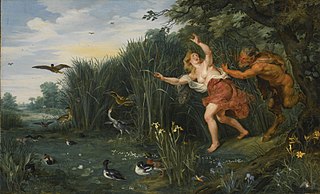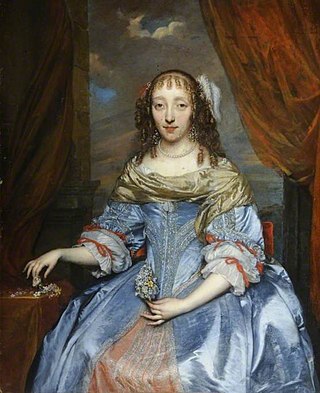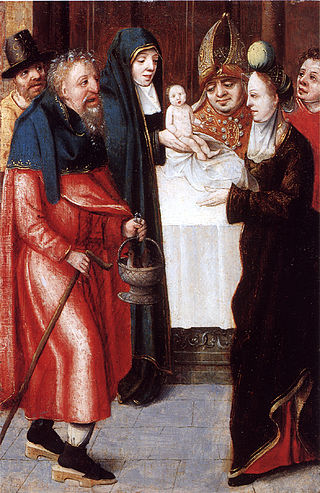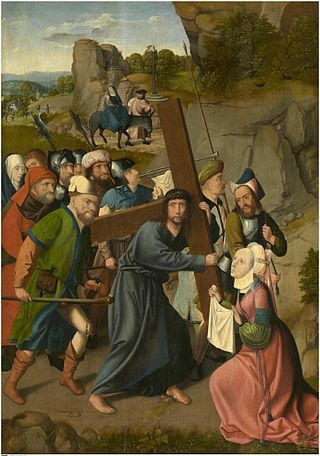
Jan Brueghelthe Younger was a Flemish Baroque painter. He was the son of Jan Brueghel the Elder, and grandson of Pieter Bruegel the Elder, both prominent painters who contributed respectively to the development of Renaissance and Baroque painting in the Habsburg Netherlands. Taking over his father's workshop at an early age, he largely painted the same subjects as his father in a style which was similar to that of his father. He gradually was able to break away from his father's style by developing a broader, more painterly, and less structured manner of painting. He regularly collaborated with leading Flemish painters of his time.

Adriaen Isenbrandt or Adriaen Ysenbrandt was a painter in Bruges, in the final years of Early Netherlandish painting, and the first of the Dutch and Flemish Renaissance painting of the Northern Renaissance. Documentary evidence suggests he was a significant and successful artist of his period, even though no specific works by his hand are clearly documented. Art historians have conjectured that he operated a large workshop specializing in religious subjects and devotional paintings, which were executed in a conservative style in the tradition of the Early Netherlandish painting of the previous century. By his time, the new booming economy of Antwerp had made this the centre of painting in the Low Countries, but the previous centre of Bruges retained considerable prestige.

Abraham van Diepenbeeck was Dutch painter, draftsman, glass painter, print maker and tapestry designer who worked most of his active career in Antwerp. He designed glass windows for various churches and monasteries in Antwerp for which he made many design drawings and oil sketches. He engraved and designed many prints which were published by prominent Antwerp printers such as van Meurs, the Plantin Press and Martinus van den Enden the Elder. He had a close relationship with the workshop of the leading Flemish Baroque painter Peter Paul Rubens and collaborated on various projects under the direction of Rubens. In the 1630's van Diepenbeeck started to create monumental paintings. His work was influenced by Rubens and Anthony van Dyck.

Gonzales Coques was a Flemish painter of portraits and history paintings. Because of his artistic proximity to and emulation with Anthony van Dyck he received the nickname de kleine van Dyck. Coques also worked as an art dealer.

Jan Snellinck or Jan Snellinck (I) (c. 1548 – 1 October 1638) was a Flemish painter, draughtsman and designer of tapestries, prints and frescoes. He is known for his large altarpieces and was also recognized as a leading battle painter in his time. Snellinck was active as an art dealer and art collector.

The Master of 1518 is a Flemish painter belonging to the stylistic school of Antwerp Mannerism. A group of unsigned paintings is attributed to this artist on stylistic grounds, and his name is derived from the date inscribed on the painted wings of a carved wooden altarpiece of the Life of the Virgin in St. Mary's Church in Lübeck Germany. Although this artist’s identity is not known with certainty, some scholars believe that the Master of 1518 was either Jan Mertens the Younger or Jan van Dornicke, or that all three were the same person. His paintings are primarily crowded depictions of religious scenes combining Gothic and Renaissance styles. He frequently incorporated elaborate clothing and architectural ruins.

Jan Massijs or Jan Matsys was a Flemish Renaissance painter known for his history paintings, genre scenes and landscapes. He also gained a reputation as a painter of the female nude, which he painted with a sensuality reminiscent of the school of Fontainebleau.

Maerten de Vos, Maerten de Vos the Elder or Marten de Vos was a Flemish painter. He is known mainly for his history and allegorical paintings and portraits. He was, together with the brothers Ambrosius Francken I and Frans Francken I, one of the leading history painters in the Spanish Netherlands after Frans Floris career slumped in the second half of the sixteenth century as a result of the Iconoclastic fury of the Beeldenstorm.

Tobias Verhaecht (1561–1631) was a painter from Antwerp in the Duchy of Brabant who primarily painted landscapes. His style was indebted to the mannerist world landscape developed by artists like Joachim Patinir and Pieter Bruegel the Elder. He was the first teacher of Pieter Paul Rubens.

Pieter Thijs, Peter Thijs or Pieter Thys was a Flemish painter of portraits as well as religious and history paintings. He was a very successful artist who worked for the courts in Brussels and The Hague as well as for many religious institutions. His work was close to the courtly and elegant style of Anthony van Dyck and his followers.

Willem van Herp (I) or Willem van Herp the Elder (variations on first name: 'Guilliam', 'Gilliam' and 'Guillaume') (c. 1614 in Antwerp – 1677) was a Flemish Baroque painter specializing in religious paintings and small cabinet paintings of "low-life" genre scenes. He operated a large workshop and through his good connections with Antwerp art dealers helped spread the Flemish Baroque style internationally.

Frans Francken I or Frans Francken the Elder was a Flemish painter who was one of the principal painters in Antwerp during the Counter-Reformation. He is mainly known for his large altarpieces and allegorical paintings. He was a member of the Francken dynasty of painters that played an important role in the Antwerp art scene in the late 16th century and the 17th century.

Jan van Balen was a Flemish painter known for his Baroque paintings of history and allegorical subjects. He also painted landscapes and genre scenes.

Alexander van Bredael was a Flemish painter known for Italianate landscapes and genre scenes of fairs, cattle markets and villages. He was a prominent member of the Antwerp artistic family van Bredael.

Hubert Goltzius or Hubertus Goltzius, latinized form of Hubrecht Goltz or Hubert Goltz was a Renaissance painter, engraver, publisher, printer and numismatist from the Habsburg Netherlands. He was also active as an art and antique dealer. He was the great-uncle of the now better known engraver and painter Hendrik Goltzius. He is now recognized mainly for his contribution to numismatics and has been referred to as the 'father of ancient numismatics'.

Peter Ykens, was a Flemish painter mainly known for his history paintings and portraits. He regularly collaborated with specialist still painters and landscape artists for whose works he provided the staffage.

The Master of Hoogstraeten is the Notname given to a Flemish painter or a collective of painters active in Antwerp in the early 16th century. The master created principally religious paintings and is considered a member of the Antwerp Mannerists.

Jan van Helmont was a Flemish painter of history subjects, genre scenes and portraits.

Jan Peeter van Bredael the Elder or Jan Pieter van Bredael the Elder was a Flemish painter, art restorer and art dealer. He is known for his still lifes of flowers and fruits, game and Italianate landscapes. He was a member of the prominent artistic family van Bredael from Antwerp.

Adriaen van Overbeke, Adrian van Overbeck and Adriaen van Overbeke was a Flemish Renaissance painter in the style of Antwerp Mannerism. He operated a large workshop with an important output of altarpieces, which were mainly exported to Northern France, the Rhineland and Westphalia. His known works were predominantly polychromed wooden altarpieces with painted shutters, which were created through a collaboration between painters and sculptors.




















